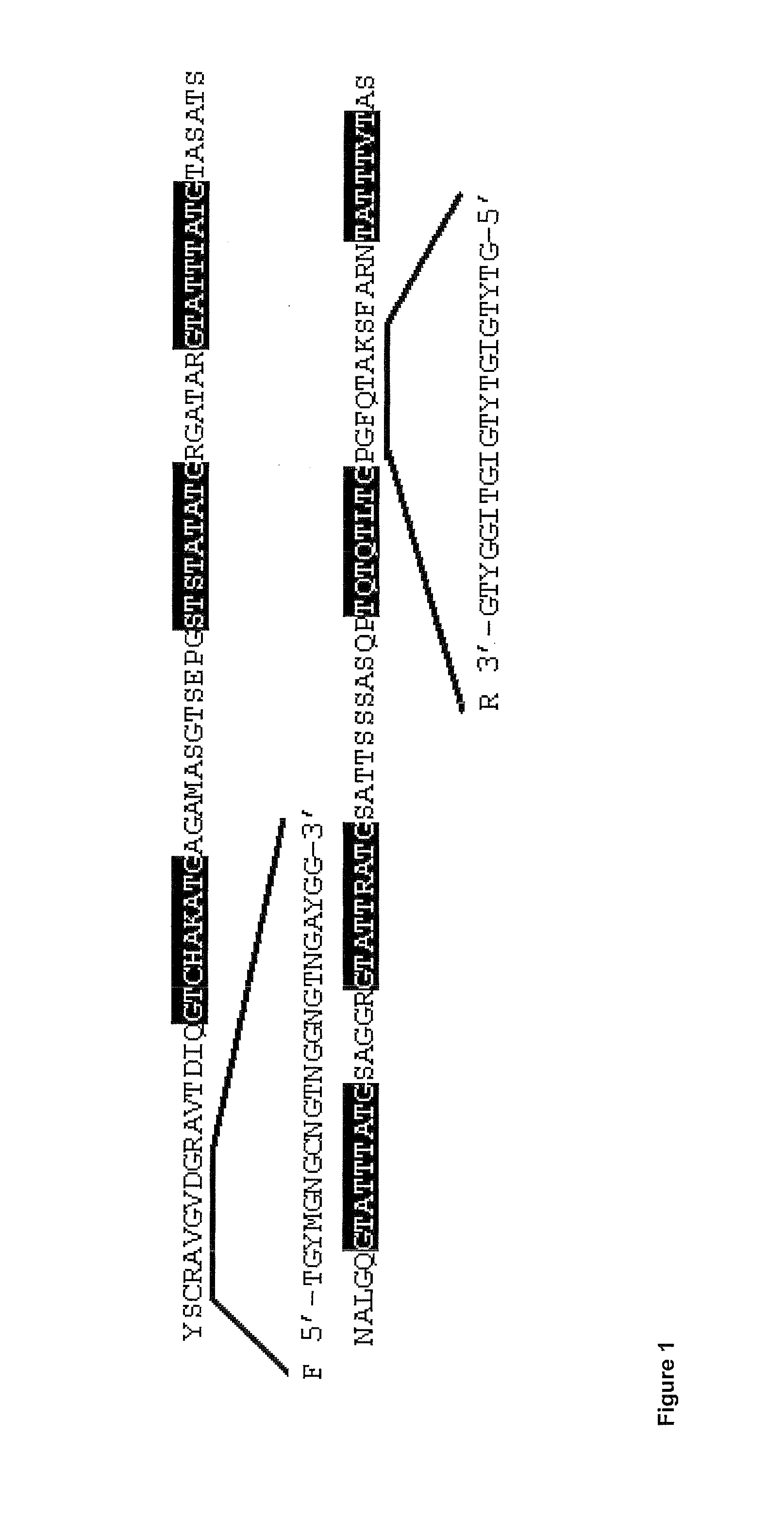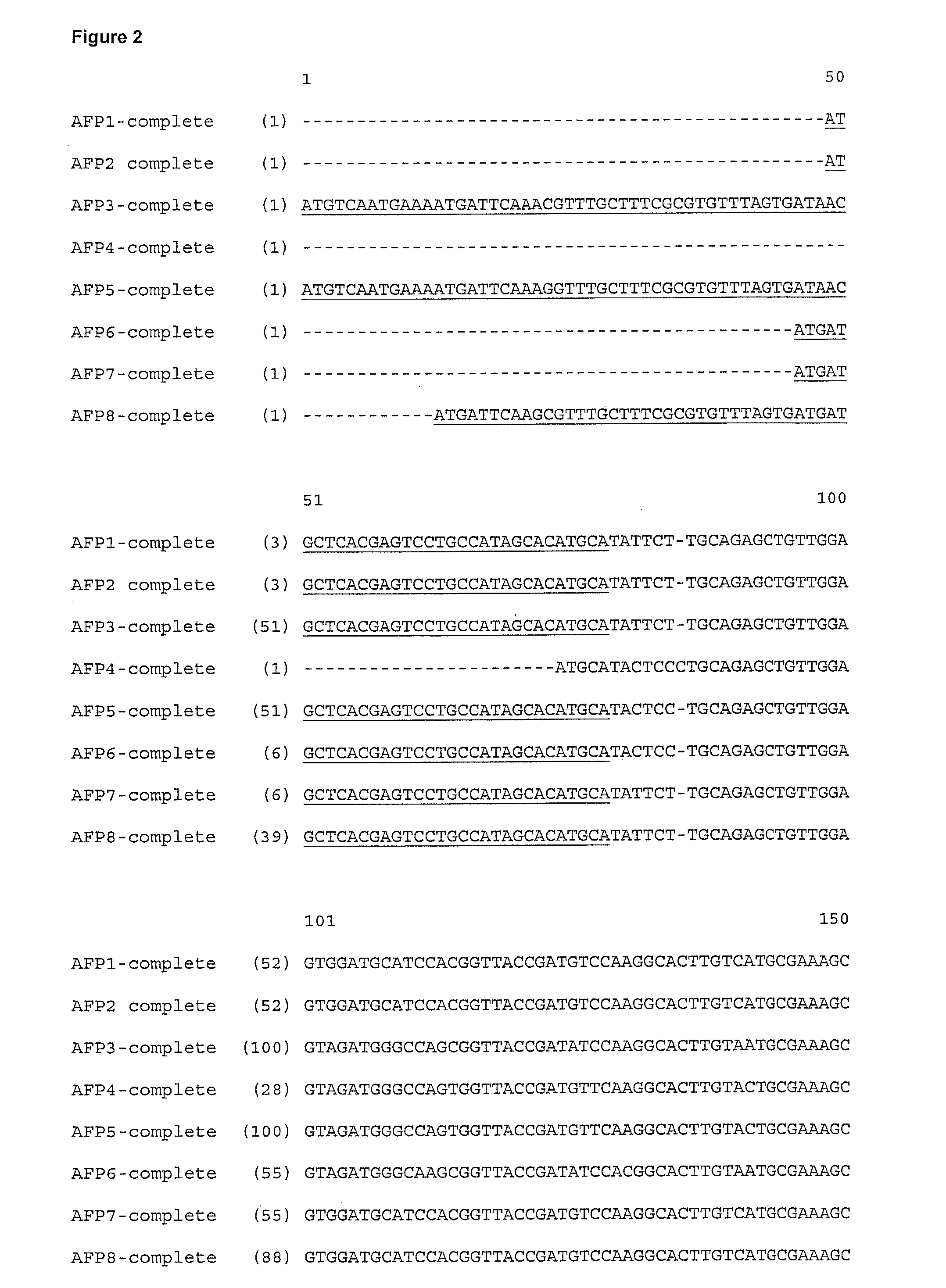Polypeptides comprising an ice-binding activity
a polypeptide and ice-binding technology, applied in the field of polypeptides, can solve the problems of unable to survive the cerambycid bark beetle, potentially lethal supercool state, etc., and achieve the effects of reducing cellular damage, minimizing inherent metabolism or degradation, and effective treatmen
- Summary
- Abstract
- Description
- Claims
- Application Information
AI Technical Summary
Benefits of technology
Problems solved by technology
Method used
Image
Examples
examples
[1127]Two different strategies were used for the identification and purification of anti-freeze polypeptides from R. mordax. [1128]1) The method published in Kristiansen et al. (2005) was used for purifying the anti-freeze polypeptides.[1129]2) Two degenerated primers were designed to match regions in the N- and C-terminal region of the R. Inquisitor AFP (FIG. 1). These were used to amplify cDNA regions from R. mordax RNA isolated from winter-collected animals in a conventional RT-PCR reaction. Such cDNA encodes the central region of putative AFP's from R. mordax. By this approach, the sequence of central portions (99-108 aa) of two types (families) of polypeptides were obtained.[1130]3) Full length AFP sequences were subsequently obtained for 9 isozymes. Primers specific for each of the central portions of the cDNA encoding putative AFP's were employed in combination with amplification of the pertinent 5′ ends (5′RACE) using the Clontech Smart RACE cDNA amplification kit. Once the ...
PUM
| Property | Measurement | Unit |
|---|---|---|
| affinity | aaaaa | aaaaa |
Abstract
Description
Claims
Application Information
 Login to View More
Login to View More - R&D
- Intellectual Property
- Life Sciences
- Materials
- Tech Scout
- Unparalleled Data Quality
- Higher Quality Content
- 60% Fewer Hallucinations
Browse by: Latest US Patents, China's latest patents, Technical Efficacy Thesaurus, Application Domain, Technology Topic, Popular Technical Reports.
© 2025 PatSnap. All rights reserved.Legal|Privacy policy|Modern Slavery Act Transparency Statement|Sitemap|About US| Contact US: help@patsnap.com



